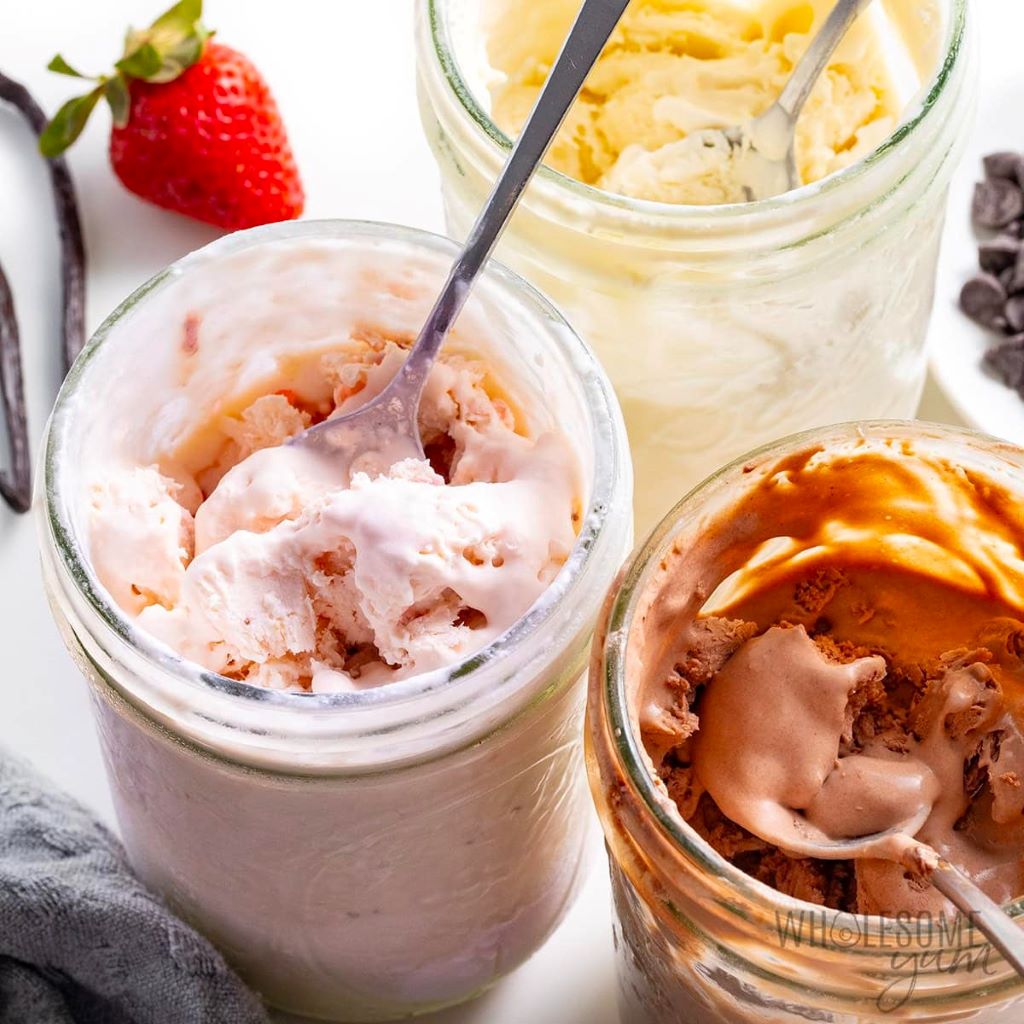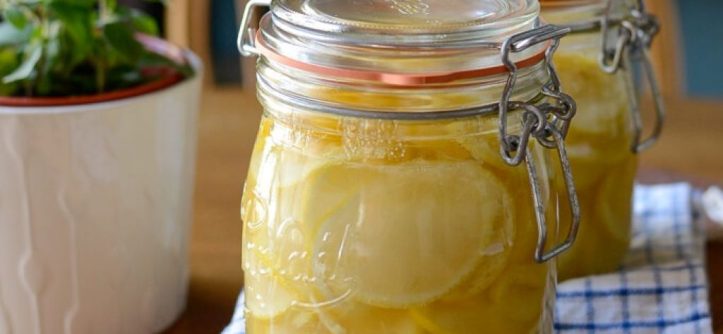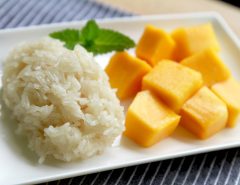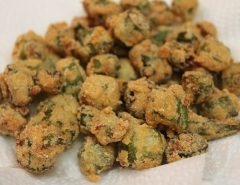Welcome to the world of healthy sweetness. If you are pursuing a low-carb, keto, or sugar-conscious lifestyle, you have likely encountered allulose. This remarkable sweetener offers the taste and texture of sugar but without the calories or the blood sugar spike. It is a fantastic tool for anyone dedicated to Sweet Healthy Living. While granulated allulose is excellent for baking, its true potential is often unlocked when it is converted into a liquid syrup. A smooth, pourable allulose syrup is perfect for sweetening drinks, drizzling on foods, and simplifying your healthy recipes.
However, many who try to make it at home encounter a frustrating problem: crystallization. You start with a clear, beautiful syrup, and the next day, it is a solid, crunchy block in the jar. The good news is that this is entirely preventable. This guide will walk you through the precise steps and science-backed tips for making a perfectly smooth allulose syrup that stays liquid. If you are just starting your journey, understanding the basics of how to make allulose syrup is the first step toward mastering this low-carb ingredient.
Why Make Your Own Allulose Syrup?
You might see pre-made allulose syrups on store shelves, so why bother making your own? There are several compelling reasons.
First, cost-effectiveness. Allulose can be more expensive than traditional sugar. Buying it in granulated form and making the syrup yourself is significantly cheaper than purchasing pre-bottled liquid versions.
Second, purity and control. When you make it at home, you know exactly what is in your bottle: allulose and water. Many commercial syrups include added fiber, natural flavors, or preservatives to maintain texture and shelf life. By making your own, you avoid any unnecessary additives.
Finally, versatility. The primary benefit of an allulose syrup is its instant solubility. Granulated allulose, like sugar, can be slow to dissolve, especially in cold applications. If you have ever tried to sweeten an iced tea or a keto cocktail with granulated sweetener, you know the gritty residue that settles at the bottom. A simple syrup dissolves instantly, making it the superior choice for iced coffee, lemonades, salad dressings, and craft cocktails.
Understanding Allulose: The Key to Smoothness
To understand why allulose crystallizes, we need to look at what it is. Allulose is a “rare sugar” (or monosaccharide). It exists in nature but in very small quantities. Unlike sugar (sucrose), the human body does not metabolize it for energy, which is why it is virtually calorie-free.
The challenge, however, is its chemical structure. Allulose has high “solubility,” meaning it dissolves easily in water, but it has a strong tendency to “recrystallize.” When the water cools, the allulose molecules want to find each other again and reform their solid crystal structure.
This is especially true if the syrup is highly concentrated (meaning a high ratio of allulose to water) or if it is stored in the cold. The refrigerator is the worst enemy of allulose syrup. Therefore, the secret to a smooth syrup is controlling two factors: concentration and stabilization.
Ingredients and Equipment You Will Need
One of the best parts of this recipe is its simplicity. You only need a few basic items.
Ingredients:
- Granulated Allulose: This is the star of the show. Ensure you are using 100% pure allulose, or a blend that specifies allulose as the primary ingredient.
- Water: Filtered or distilled water is recommended. Tap water can sometimes contain minerals that may slightly affect the crystallization process or clarity.
- An (Optional) Stabilizer: This is the secret weapon. A very small amount of an acid can help prevent crystallization. The best options are:
- A pinch of Cream of Tartar (potassium bitartrate)
- A few drops of Lemon Juice (citric acid)
Equipment:
- A small saucepan or pot
- Measuring cups
- A whisk or silicone spatula
- A clean, sterilized glass jar or squeeze bottle with an airtight lid for storage.
The Step-by-Step Recipe for Smooth Allulose Syrup
This process is quick, but it requires attention. Do not walk away from the stove.
Step 1: Determine Your Ratio
The ratio of allulose to water determines the syrup’s thickness and its stability.
- 1:1 Ratio (Recommended for Beginners): This means one part water to one part allulose (e.g., 1 cup water, 1 cup allulose). This ratio creates a “simple syrup” consistency, similar to traditional simple syrup used in bars. It is the least likely ratio to crystallize and is perfect for drinks.
- 1.5:1 Ratio: This means one part water to 1.5 parts allulose (e.g., 1 cup water, 1.5 cups allulose). This will be slightly thicker, more like a “rich” simple syrup.
- 2:1 Ratio: This means one part water to two parts allulose (e.g., 1 cup water, 2 cups allulose). This creates a very thick syrup, similar to honey or pancake syrup. However, this ratio is extremely prone to crystallization without a stabilizer.
For your first attempt, we strongly recommend the 1:1 ratio.
Step 2: Combine and Heat Gently
Combine your chosen amounts of water and granulated allulose in the small saucepan. If you are using a stabilizer, add your pinch of cream of tartar or drops of lemon juice now.
Place the saucepan on the stove over medium-low heat.
Step 3: Dissolve (The Most Important Step)
Stir or whisk the mixture gently as it heats up. Your only goal at this stage is to dissolve the allulose granules completely. The mixture will go from cloudy and sandy to perfectly clear.
Crucial Tip: Do not stir vigorously, and stop stirring completely once the granules are dissolved and the liquid is clear. Excessive agitation can encourage crystals to form later.
Step 4: The Gentle Simmer
Once the syrup is completely clear, allow it to come to a very gentle simmer. You should see just a few small bubbles breaking the surface.
Do not let it come to a rolling boil. If you boil the syrup, you will evaporate too much water. This changes your 1:1 ratio into a 1.5:1 or 2:1 ratio, making the syrup over-concentrated and guaranteeing it will crystallize when it cools.
Let it simmer gently for only 1 to 2 minutes. The purpose of this step is just to ensure every last granule is dissolved and the solution is stable.

Step 5: Cool and Store
Remove the saucepan from the heat. Let the syrup cool down in the pan for at least 20-30 minutes. It will thicken slightly as it cools.
Once it is no longer hot (it can be warm), carefully pour the smooth allulose syrup into your clean, dry glass jar or bottle. Seal it with an airtight lid.
How to Ensure a Smooth Syrup: Pro-Tips for Preventing Crystallization
If you have struggled with crystallization in the past, here are the advanced tips to solve it for good.
The Stabilizer Secret (Acid)
The pinch of cream of tartar or lemon juice is not for flavor. The acid performs a chemical reaction called “inversion.” In simple terms, it breaks a very small number of the allulose molecules into different structures. These “different” molecules get in the way of the regular allulose molecules, acting like barriers that prevent them from locking together into a uniform crystal. This is the single most effective trick to keeping your syrup liquid.
Avoid the Refrigerator
This is the most common mistake. Cold temperatures are the primary trigger for allulose crystallization. You must store your homemade allulose syrup in a cool, dark place at room temperature, like a pantry or cupboard. Do not put it in the refrigerator.
Keep Your Jar Clean
Make sure the jar or bottle you use is perfectly clean and dry. Any old sugar crystals or food particles on the inside of the jar can act as a “seed,” giving the allulose molecules a starting point to begin the crystallization chain reaction. The same goes for the rim of the bottle; wipe away any sticky drips after pouring.
Consider a Blended Sweetener
If you are still struggling, or want a shortcut, use a granulated sweetener that is already a blend of allulose and monk fruit (or stevia). These other high-intensity sweeteners are structured differently and naturally act as inhibitors, much like the cream of tartar. A blended sweetener is far less likely to crystallize than 100% pure allulose.
How to Use Your Homemade Allulose Syrup
Now that you have a bottle of perfectly smooth, liquid sweetener, the possibilities are endless.
In Drinks (The Best Use)
- Iced Coffee and Tea: Instantly dissolves without any gritty texture.
- Keto Cocktails: Essential for making low-carb mojitos, margaritas, or a whiskey sour.
- Lemonade: Create a refreshing, sugar-free lemonade for the whole family.
- Smoothies: Adds a touch of sweetness without the chalky texture of some granulated sweeteners.
Sauces and Drizzles
- Salad Dressings: Perfect for balancing the acid in a vinaigrette.
- Marinades: Helps create a sweet glaze for chicken or pork.
- Pancake Syrup: Use a 2:1 ratio (with a stabilizer) for a thick pancake syrup. You can even add a drop of maple extract for flavor.
In Baking (Limited Use)
While allulose itself is great for baking, the syrup is best used in recipes that call for a liquid sweetener, like pecan pie, puddings, or cheesecakes. For cakes and cookies, it is usually better to stick with granulated allulose, as the liquid syrup will change the moisture content of the recipe.
Troubleshooting: “Help! My Syrup Crystallized!”
Do not throw it away! It is completely salvageable.
If you find your syrup has turned into a solid block, it simply means it was either too concentrated or it got too cold.
The Fix:
- Place the sealed jar in a saucepan filled with a few inches of water, creating a “water bath” or bain-marie.
- Gently heat the water on the stove over medium-low heat.
- As the jar heats, the crystallized allulose will melt and turn back into a clear liquid.
- Once it is fully liquid, remove it from the heat. Carefully open the lid (it may be hot) and stir in one or two tablespoons of warm water.
- This added water will dilute the concentration, making it more stable.
- Let it cool and store it at room temperature, not in the fridge.
Conclusion
Making your own smooth allulose syrup at home is a simple, cost-effective, and empowering skill for anyone on a healthy eating journey. It transforms allulose from a simple baking ingredient into a versatile kitchen staple. The key to success is not a complicated recipe, but a simple understanding of the science.
By choosing the right ratio (1:1 is safest), controlling your heat (no boiling), and using a small amount of an acid stabilizer, you can easily create a crystal-clear syrup. Remember to store it at room temperature, and you will have a perfect, pourable, low-carb sweetener ready for all your drinks and recipes.
Frequently Asked Questions (FAQs)
-
Why did my allulose syrup turn solid?
This is almost always due to one of two things: it was stored in the refrigerator, or the syrup was over-concentrated. If you boiled it for too long, too much water evaporated, leaving too much allulose for the water to hold in suspension. Always store it at room temperature.
-
Can I make a thick 2:1 (allulose to water) syrup?
Yes, you can, but it is much more advanced. A 2:1 ratio is highly unstable and will almost certainly crystallize unless you use a stabilizer like cream of tartar. It is excellent for a pancake syrup texture, but for general use, a 1:1 ratio is much easier and more reliable.
-
Does allulose syrup taste different than sugar syrup?
Allulose is prized for having a taste profile very similar to sugar. It does not have the “cooling” effect of erythritol or the bitter aftertaste of some stevia. Most people find it to be a very clean, neutral-tasting sweetener.
-
How long does homemade allulose syrup last?
Because it is essentially a sugar (even if we do not digest it), it is very stable. When stored in a clean, airtight container at room temperature, it can easily last for several months. It is naturally preservative.
-
Is allulose syrup safe for diabetics?
Allulose is widely considered safe for diabetics. It is not metabolized by the body and has been shown in studies to not raise blood glucose or insulin levels, making it an excellent sugar substitute for managing blood sugar. However, you should always consult your doctor if you have specific health concerns.
Related Topics:





Leave a Reply